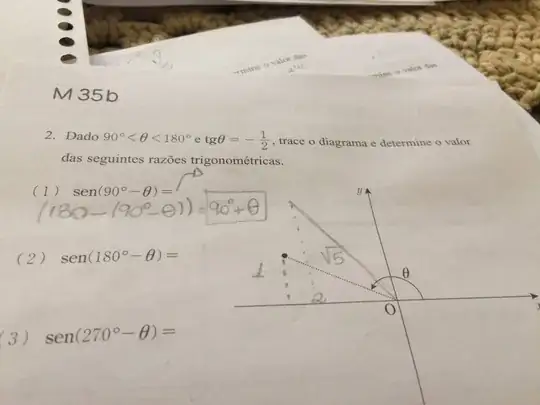I am doing a trigonometry exercise and I am struggling to understand one thing, the exercise is pretty elementar, but I am still in the basics of it... The exercise is as follows: Let 90 < A < 180 and tgA = -1/2
What is: sin(270 - A) cos(270 - A)
The picture is attached. My doubt is: I know that sin(270 - A) is an angle and that this angle is on the second quadrant because [270 - (180 - A)] is equal to 90 + A Then I drew up a right triangle and since I know that tgA = -1/2, I drew adjacent = 2 , opposite = 1 and hypotenuse = square root of 5 So far so good, but then the exercise asked sin(270-A), then I simply evaluated the triangle I drew by getting the opposite value over hypotenuse, which in this case is (square roof of 5 / 5) I have access to the answer sheet to see if I am understanding it right, it turns out that -2/5 / 5 It seems as though the adjacent turned into opposite and vice versa Why do they change places? What is the logic behind it?
I am sorry if my explanation was poor, I can give more examples and further details if you guys want so
Thank you a lot in advance 
